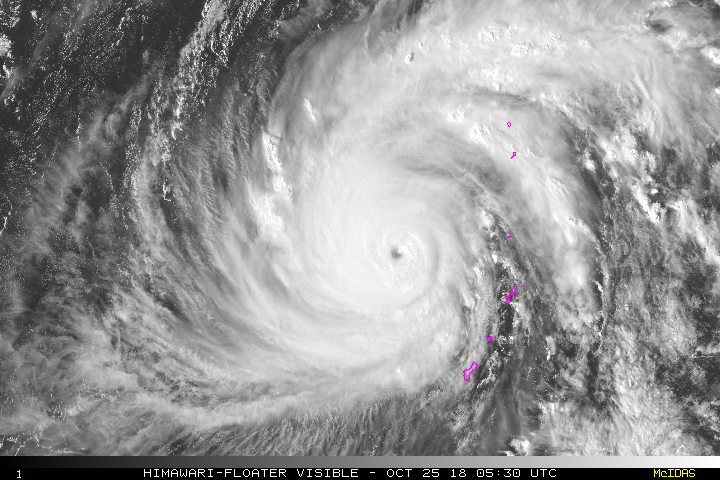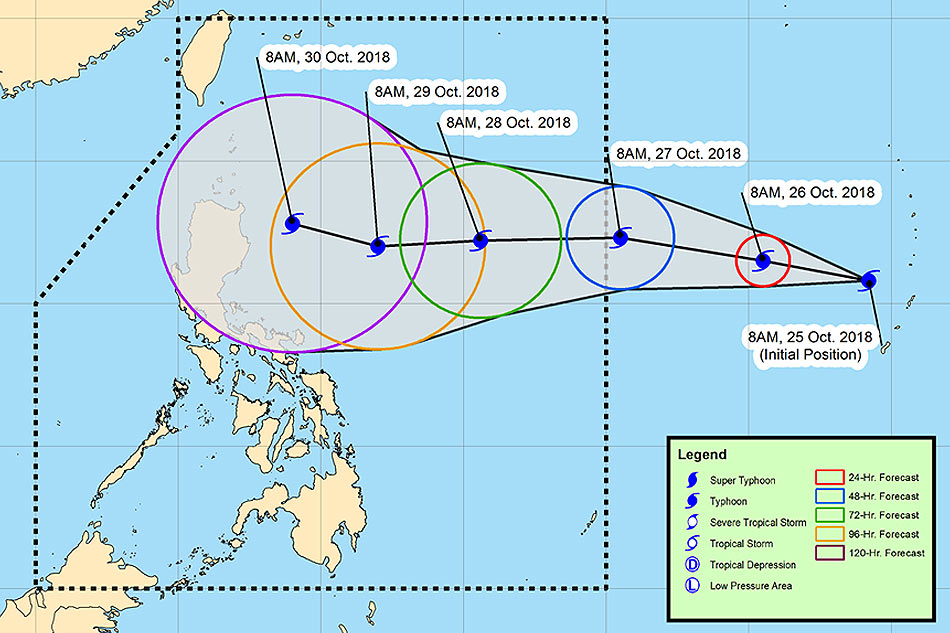MANILA: Philippine authorities started to move people to safer grounds as Typhoon Yutu approaches, tracking a path similar to last month’s storm that devastated rice-producing provinces in the main island of Luzon.
Yutu, which last week became the strongest storm since 1950 to hit the US territories in the Northern Mariana Islands, is now the equivalent of a Category 2 storm on the US Saffir-Simpson scale. Its maximum winds have slowed to 167 kilometres per hour, according to the latest Joint Typhoon Warning Center forecast.
The typhoon is forecast to make landfall on Tuesday either in the province of Isabela or Aurora in northern Philippines, according to the local weather bureau. Mangkhut, which killed more than 120 people in the Philippines and damaged about 26.7 billion pesos ($498 million) of the nation’s farm output, slammed into Cagayan province, also in north Luzon, in September.
Storm signal No. 3 was raised in the provinces of Isabela, Quirino and Aurora. Under the third-highest alert, rice and corn crops may suffer heavy losses and widespread disruption of power and communication lines may happen, according to the Philippine weather bureau.
More than two dozen areas including the capital region of Metro Manila are under lower alert levels. About 20 cyclones pass through disaster-prone Philippines each year. In 2013, Super Typhoon Haiyan killed more than 6,300 people in the Southeast Asian nation.
As many as 12 million people in 290 cities and towns in Luzon are along the storm’s path, Edgar Posadas, spokesman for the Philippine disaster-monitoring agency, said at a televised briefing.
Cebu Air Inc. canceled several local flights ahead of the Halloween break. Yutu, named Rosita in the Philippines, was about 355 kilometres from Luzon’s east coast on Monday afternoon.
Last month, Mangkhut hit the Philippines main island before striking Hong Kong. At their peak, both Mangkhut and Yutu had winds of 180 miles per hour, making them the strongest in the world this year.
“Manila will get a little bit of rain but the worst of it is well to the north,” said Jason Nicholls, a meteorologist with AccuWeather Inc. in State College, Pennsylvania.
The mountains of Luzon will tear at Yutu’s structure and significantly weaken the storm before it emerges into the South China Sea Wednesday, Nicholls said.
Yutu is forecast to drift north, possibly bringing rain to China’s southeast coast in the coming days.












